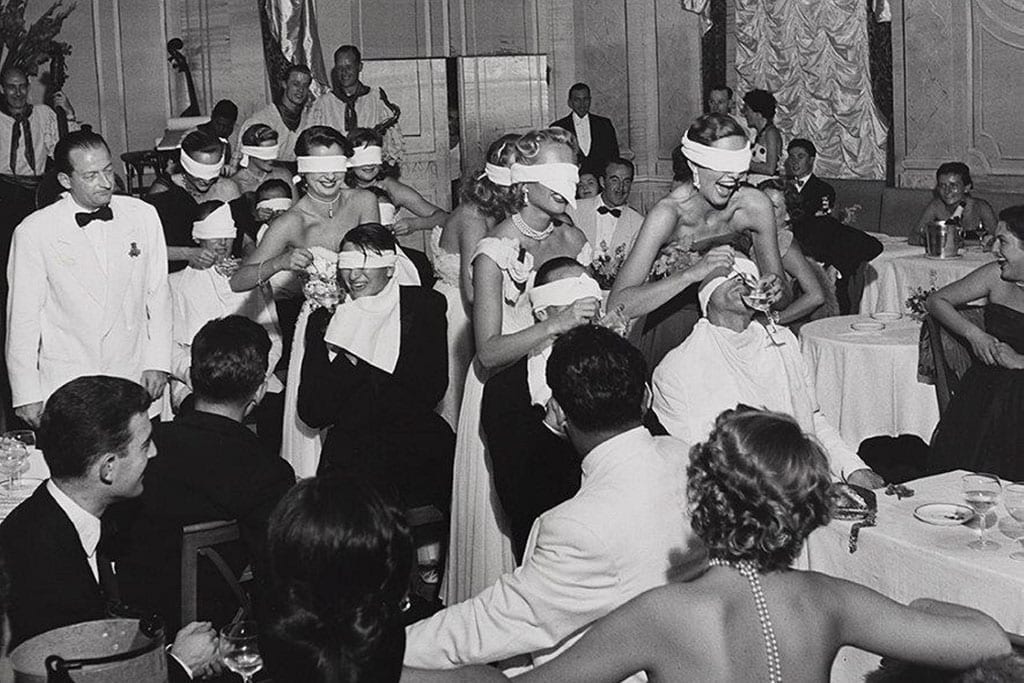
רוברט קאפה: צלם של החיים/ מוזיאון תל אביב
Robert Capa: Photographer of Life. "אם תצלומיך לא טובים מספיק, סימן שלא התקרבת מספיק"
רוברט קאפה
מבחר עבודות מאוסף המוזיאון / אוצרת: רז סמירה
19.2.15 – 22.8.15
מוזיאון תל אביב. הגלריה לצילום ע"ש דורון סבג־ors בע"מ הבניין ע"ש שמואל והרטה עמיר
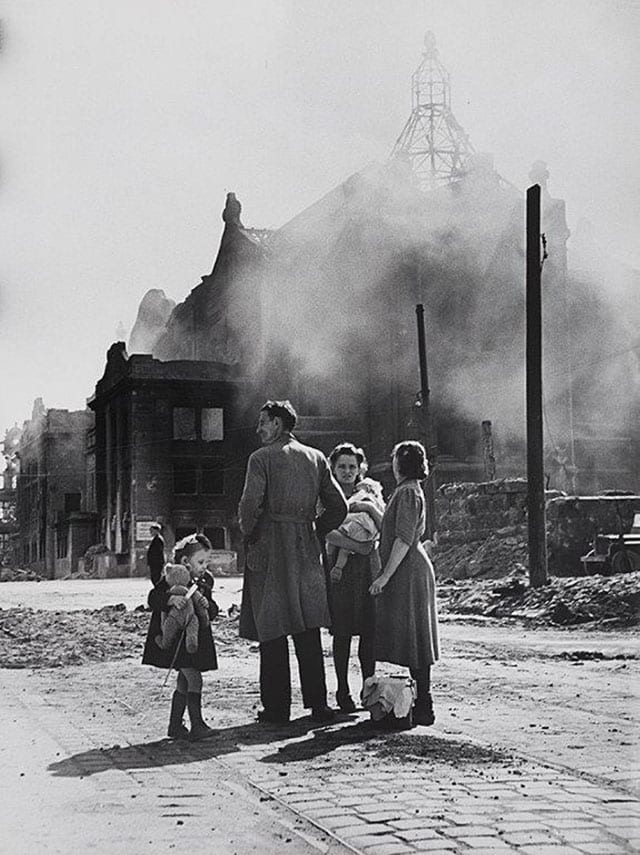
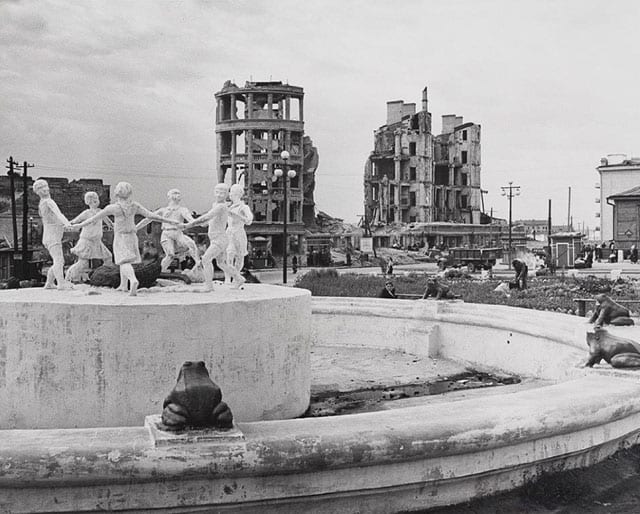
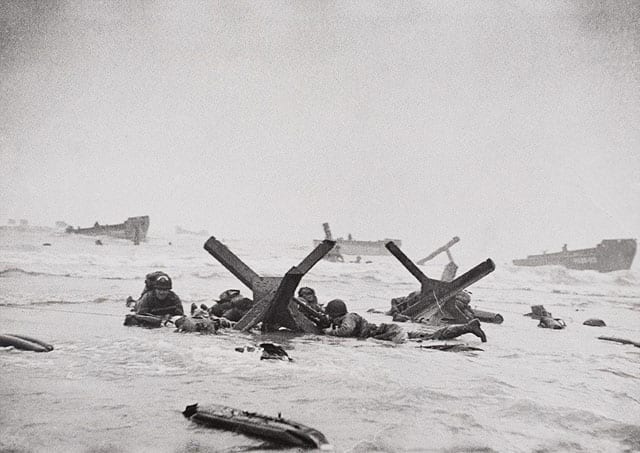
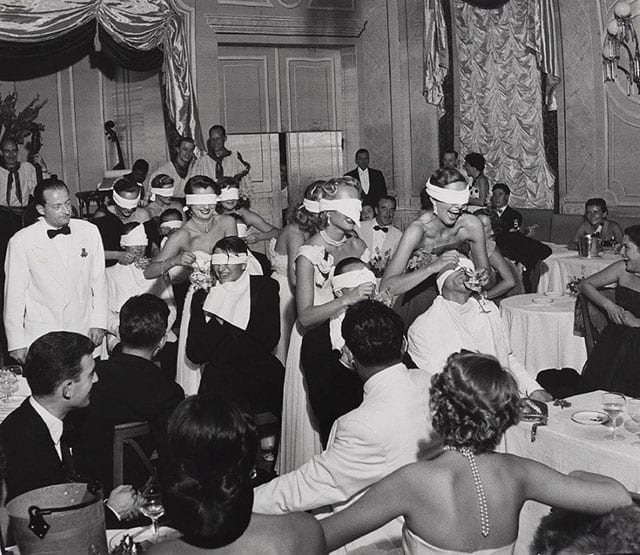
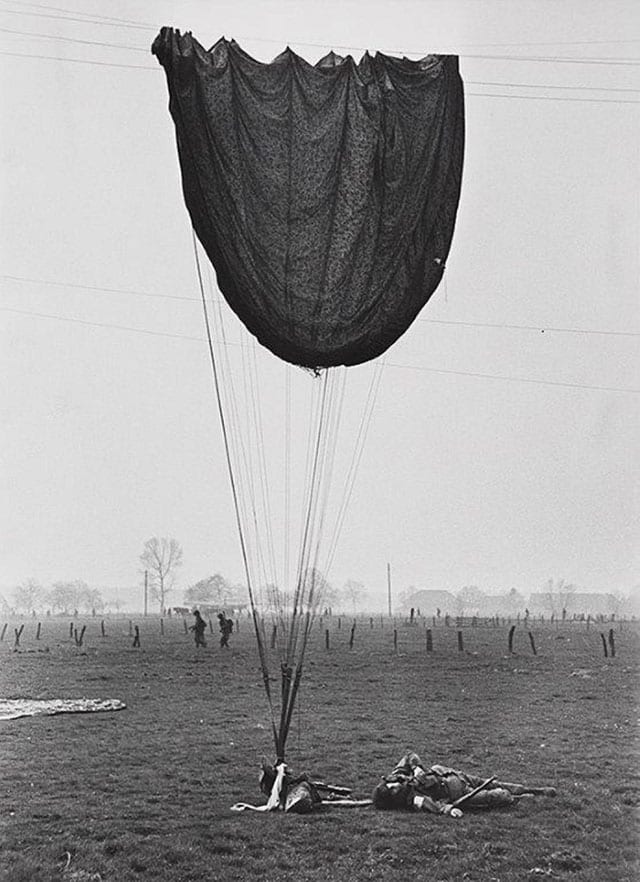
מלחמה זה דבר רע. היא מצטלמת נהדר. שלום, כך נדמה, פחות פוטוגני. בתערוכה, "רוברט קאפה: צלם של החיים" במוזיאון תל אביב לאמנות, מוצג מבחר מעבודותיו מהעולם ומישראל. בין היתר, לאון טרוצקי בקופנהגן, תצלומו הראשון מ־1932. החייל הרפובליקני בימי מלחמת האזרחים בספרד ברגע מותו (תצלום מ־1936 שהודפס במרבית עיתוני העולם והיה עד מהרה לסמל ההתנגדות לפשיזם ולמלחמות); נחיתת בעלות הברית בנורמנדי וירי צלפים גרמנים על ההמון החוגג את שחרור פריז. התערוכה מדגישה את הצד האוניברסאלי בתצלומים המייצגים את "תפיסת הרגע" ואת היעדר היומרה בייצוג "המצב האנושי". פוטוגני, או לא, אנחנו מעדיפים שלום.
רוברט קאפה – "הטוב שבצלמי המלחמה" – נמנה עם קבוצת צלמי עיתונות במאה ה-20 שכבשו לעצמם מקום מרכזי בעולם התקשורת. קאפה נולד ב־1913 למשפחה יהודית בבודפשט ושמו היה אנדרה פרידמן. בגיל 17, לאחר שנחשד בהתססה נגד הרודן הוֹרְטִי, עזב את הונגריה ועבר לברלין, שם עבד כאסיסטנט במעבדת צילום. ב־1933, עם עליית הנאצים לשלטון, ברח לפריז, אימץ לעצמו שם בדוי – רוברט קאפה ופיתח קריירה של צלם עצמאי. הוא נמשך לאירועי התקופה הסוערים ובעיקר לרוחות המלחמה של תחילת שנות ה-30 באירופה. נקודת מבטו הייתה של הזדהות עם האדם הפשוט שאיבד את השליטה על עתידו ועל גורלו. הוא היה צלם מלחמות פציפיסט, רוב תמונות המלחמה שצילם, אינן מנציחות קרבות הרואיים, אלא את שולי המלחמה, את החייל היחיד או קבוצה קטנה של לוחמים. קאפה קבע את בסיסו בפריז, אך נדד בין מדינות ויבשות וממלחמה אחת לאחרת. בשנת 1948, הגיע לישראל כדי להשתתף באירועים ההיסטוריים. תצלומיו כגון הכרזת העצמאות, ספינת אלטלנה העולה באש, בגין הנואם לפני המון אדם, הפליטים שהגיעו ארצה והמעברות משרטטים מסע נוסטלגי בזמן לישראל של פעם, האופטימית והאידיאליסטית. ב־1947 יסד קאפה בפריז (עם אנרי קרטייה ברסון, דיוויד סימור, ויליאם ואנדיוורט וג'ורג' רוג'ר) את סוכנות הצילום "מגנום" השיתופית לצלמים עצמאיים. ב־25 במאי 1954, בעודו מתעד את מלחמת הקולוניאליסטים הצרפתים בכוחות הגרילה הווייטנאמים בהודו־סין, הוא עלה על מוקש. בן 41 היה במותו ששיקף את המוטו שלו: "אם תצלומיך לא טובים מספיק, סימן שלא התקרבת מספיק".
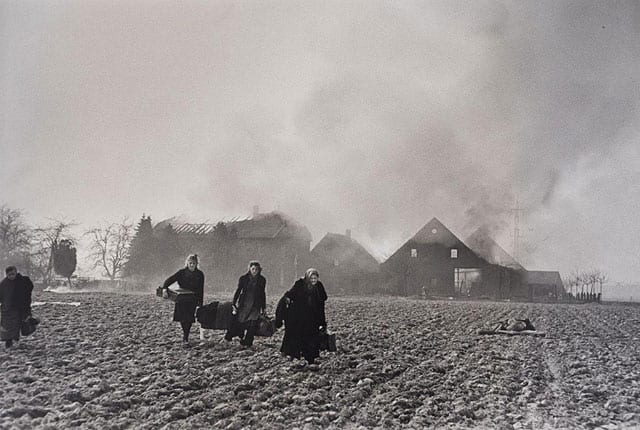
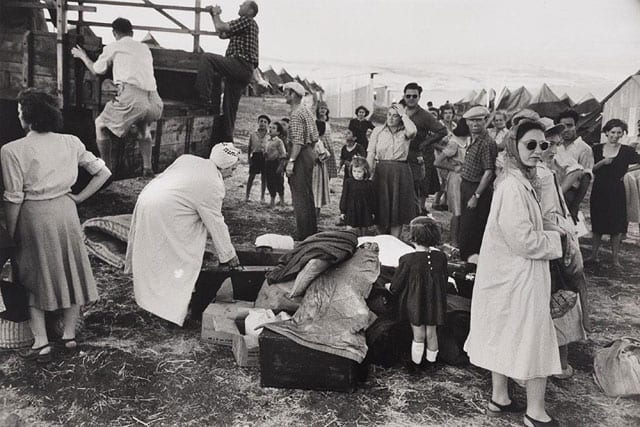
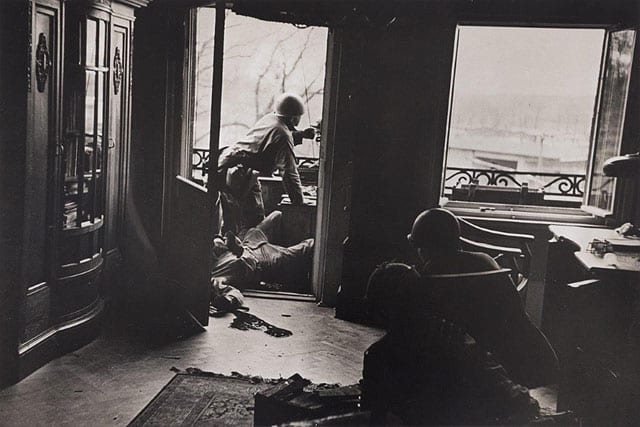
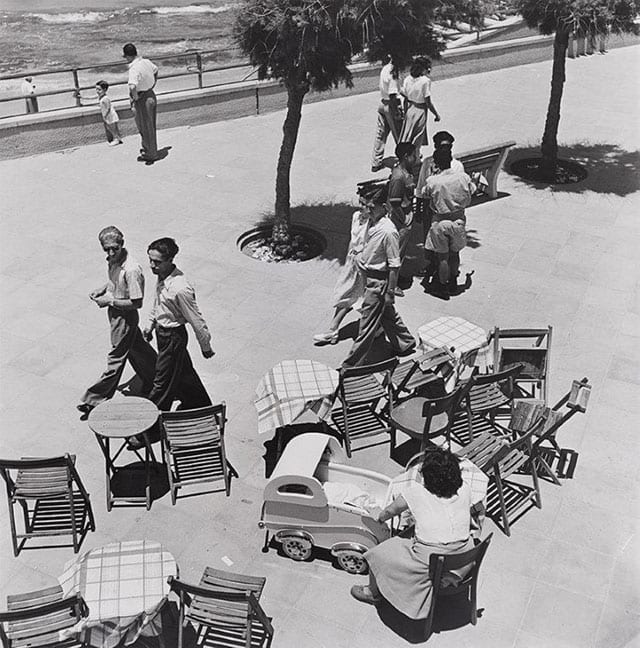
Tel Aviv Museum of art
Robert Capa: Photographer of Life
A Selection of Works from the Museum Collection
OPENING DATE: Thursday 19 February 2015
CLOSING DATE: Saturday 22 August 2015
Doron Sebbag–ORS Ltd. Photography Gallery Herta and Paul Amir Building – CURATOR: Raz Samira
Robert Capa (1913–1954), once described as "the world's best war photographer," belonged to a small group of prominent 20th-century photojournalists. Capa was born Endre Friedmann to a Jewish family in Budapest, then Austro-Hungary. Aged 17, he was arrested on suspicion of political activity against Regent Miklós Horthy; upon his release, he left for Berlin, where he worked as a darkroom assistant. In 1933, with the rise of Nazi rule, he escaped to Paris, adopted the name Robert Capa, and began working as a freelance photographer. Drawn to the stormy events of the era, especially the early 1930s winds of war in Europe. He was motivated by identification with simple people who had often lost control over their life and destiny.
Capa based himself in Paris but throughout his short life moved between countries and continents and from one war to the next. On 25 May 1954, while documenting the French colonialists waging war against Vietnamese guerrilla forces in Indochina, Capa was killed when he stepped on a landmine. He was 41 years old, and his death reflected his motto: "If your photographs aren't good enough, you're not close enough."
The dichotomy that drove him, as a pacifist war photographer, is manifested in his war photographs. They do not commemorate battlefields or heroic combat, but rather the margins of war: a solitary soldier or a small group of fighters. The warmth and humanity radiating from the photographs inspire a range of feelings in the viewer, from pain to joy. Capa's photographs became an outcry against war and its consequences, against oppression and injustice. In an interview published in the Israeli daily Al HaMishmar on 21 June 1948, Capa explained: "War interests me, but I cannot bear to see blood. I just cannot. Throughout my career I never photographed a corpse. I only photograph living souls or, to be exact, I photograph life. It seems I have been doomed: where war rages, there I am. But believe me, I would so, so much rather there to be no war."
The exhibition presents a selection of Capa's works taken in Israel and overseas. Among them, his first photograph, from 1932, of Leon Trotsky; the republican soldier from the Spanish civil war at the moment of his death (a photograph from 1936 which was printed in most newspapers throughout the world and soon became a symbol of anti-fascism and opposition to war in general); the D-day landing on Omaha beach and German snipers shooting at crowds celebrating the liberation of Paris. In 1948 Capa came to Israel to witness and photograph the constitutive historical events. His photographs—including the declaration of independence, the Altalena cargo ship on fire, Begin addressing a crowd, refugees arriving in Israel, the refugee transit camps (ma'abarot)—all outline a nostalgic tour of Israel as it then was: optimistic, naïve, idealistic.
The exhibition emphasizes the universal facet of Capa's works, combining the individual and the collective. His photographs exemplify "capturing the moment" and the lack of pretension in presenting the human condition as it is expressed in the battlefields as well as in mundane depictions of everyday moments in life in Israel and overseas, in motifs that recur often and everywhere. In the catalogue of Capa's 1988 exhibition at the Tel Aviv Museum, poet Haim Gouri described him as a "soldier-artist, who did not 'shoot' people, but rather immortalized them and their actions in pictures which will remain with us always."
In 1947, Capa co-founded Magnum Photos in Paris with Henri Cartier-Bresson, David Seymour, William Vandivert and George Rodger: a cooperative agency of and for freelance photographers, and became its president in 1952. In 1955, the American Overseas Press Club established, together with Capa's brother Cornell Capa, the Robert Capa Gold Medal, awarded annually to outstanding photographers for "exceptional courage and enterprise."
All photographs are silver prints (under the supervision of Cornell Capa, 1987)
רוברט קאפה: צלם של החיים/ מוזיאון תל אביב
Robert Capa: Photographer of Life
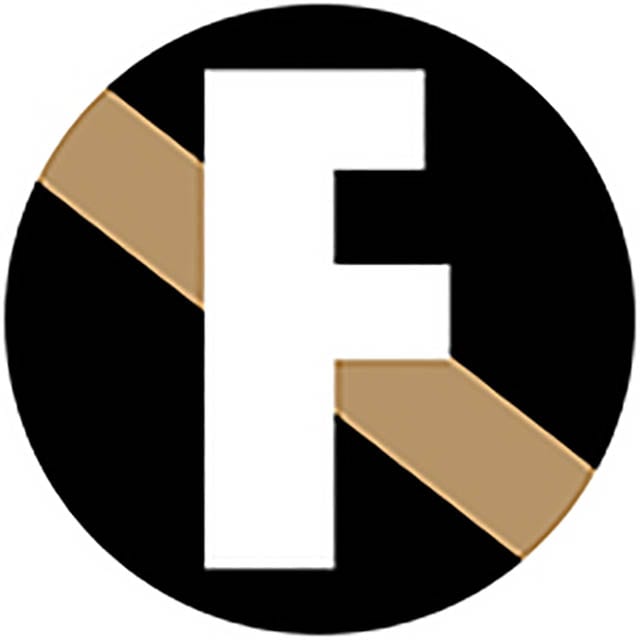
בעלים ועורך אחראי: אפי אליסי
Fashion Israel – מגזין אופנה ישראלי
מייל: fashionisrael.mag@gmail.com
טלפון: 050-7368167
אינסטגרם: fashionisrael.mag
אתר: https://www.fashion-israel.co.il/
הקבוצה שלנו בפייסבוק: Fashion Israel – מגזין אופנה של כולם!
דף עסקי: Fashion Israel
כתובת למשלוח: רח׳ בר כוכבא 1, דירה 1, רמת גן
